#The Charles Whittinghams Printers
Text
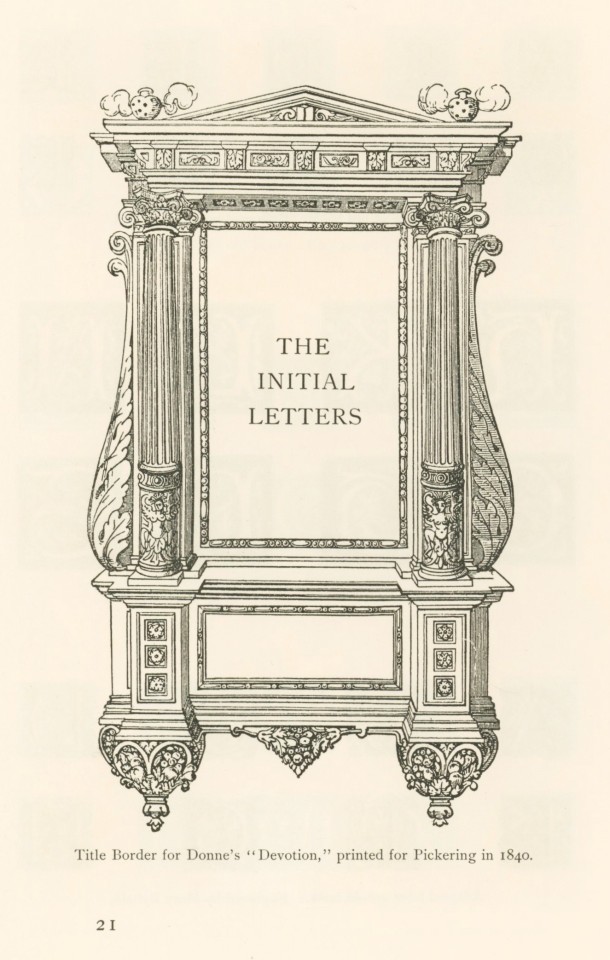

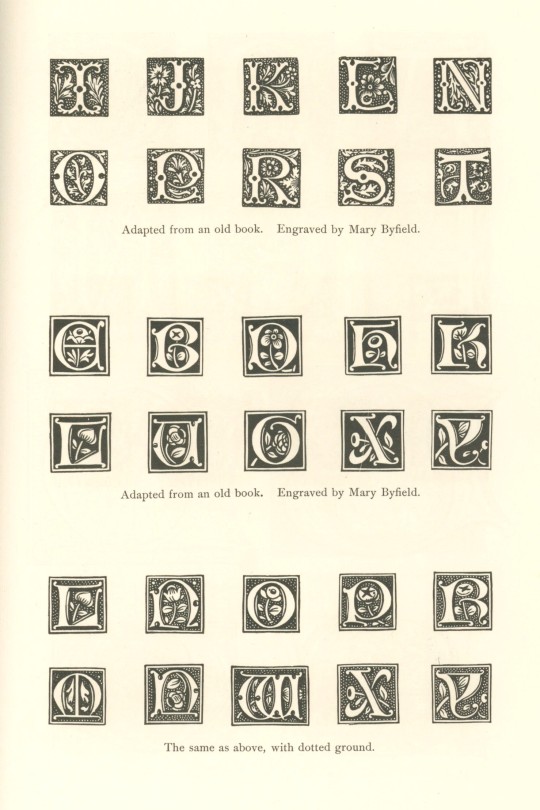
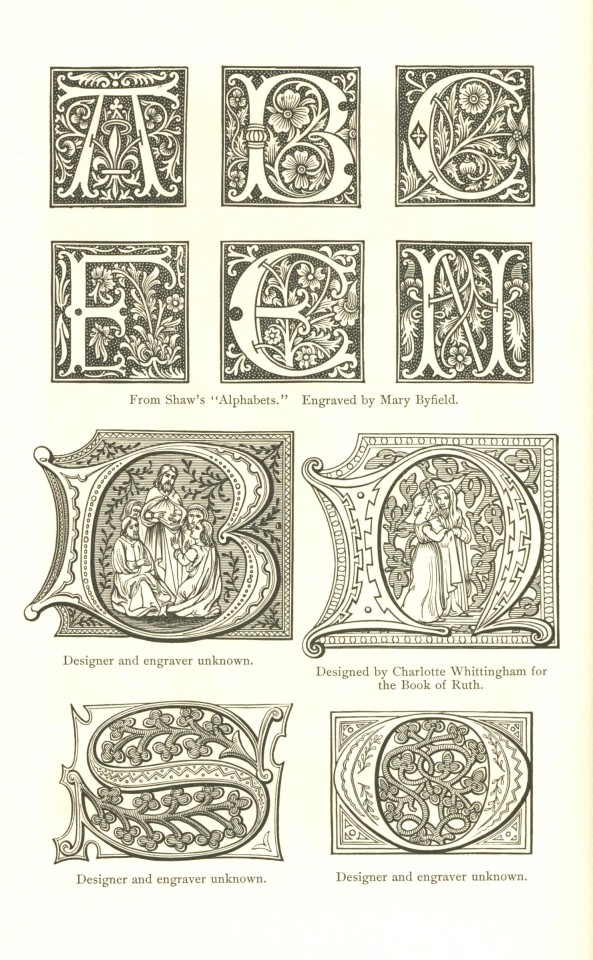

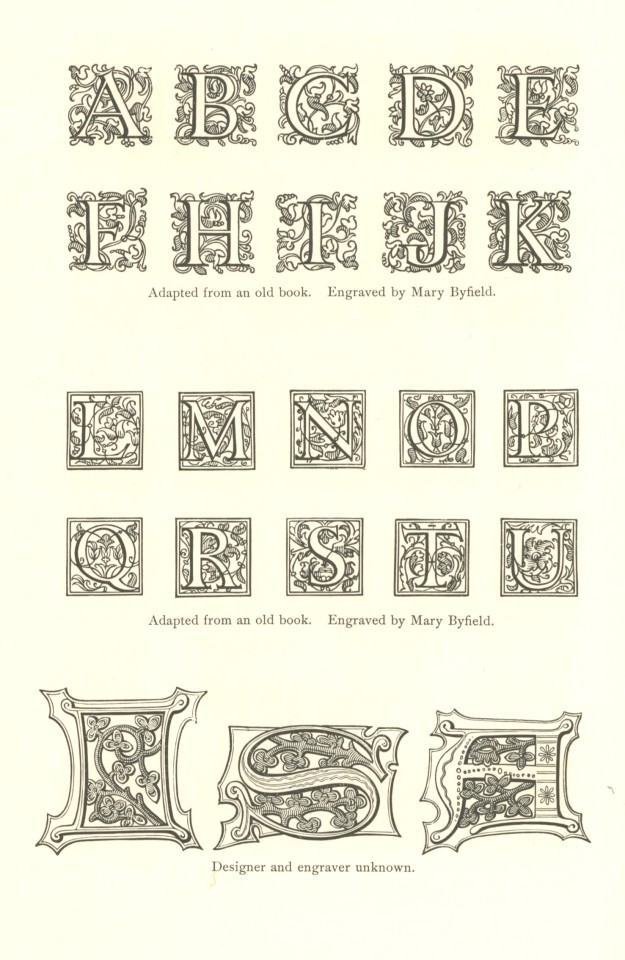

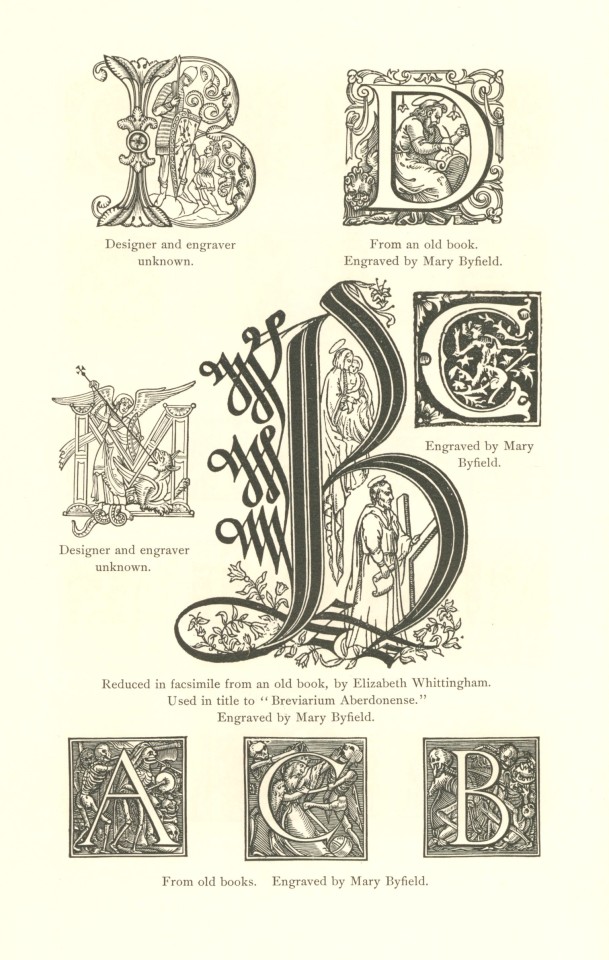
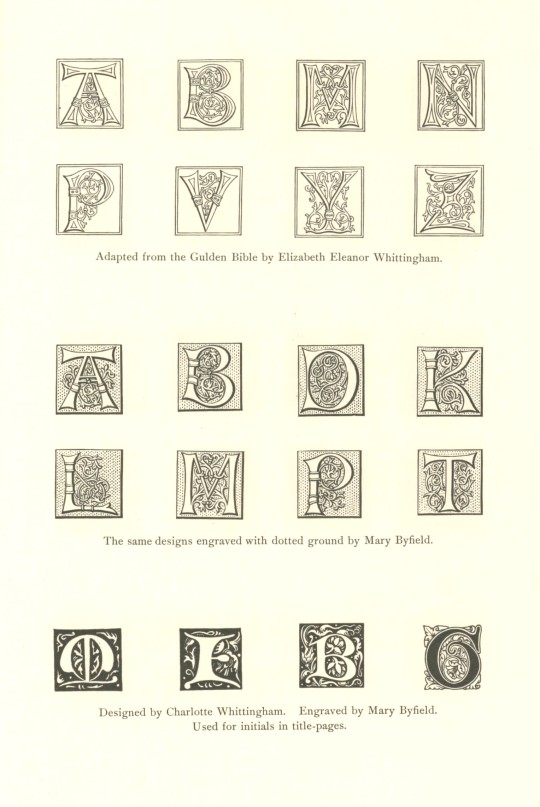

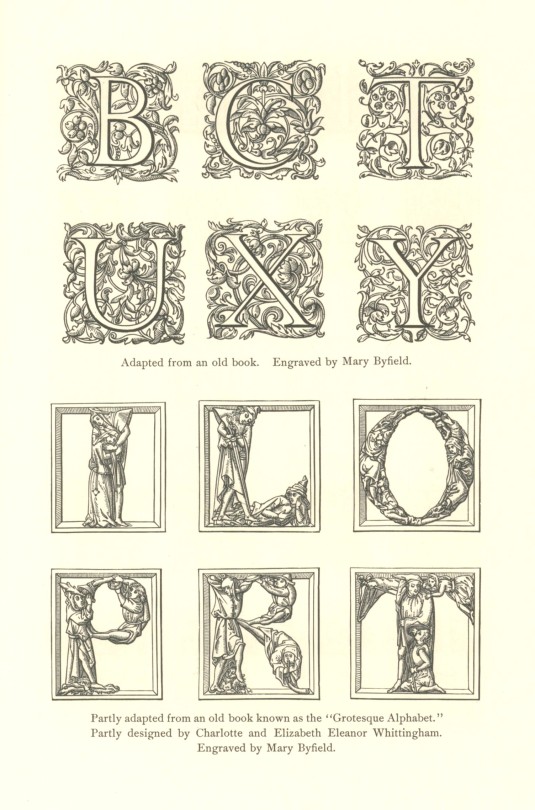
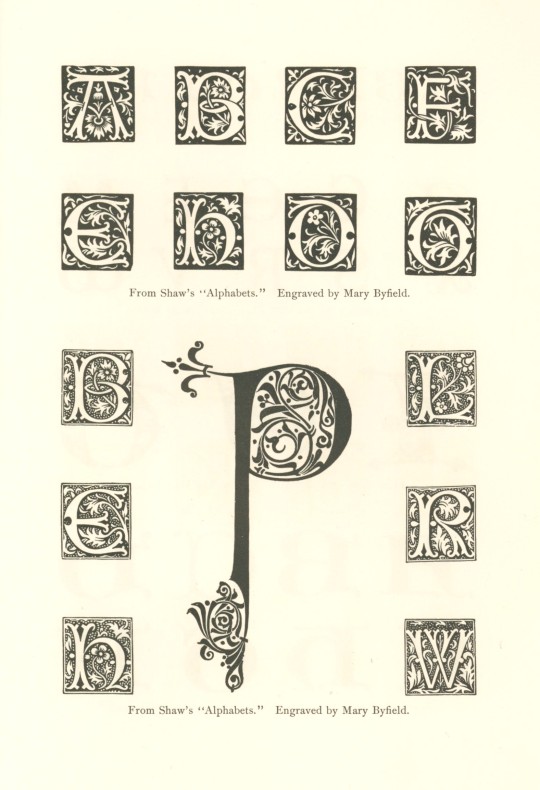
Typography Tuesday
WHITTINGHAM INITIALS
The Whittinghams, Charles the Elder (1767-1840), who founded the Chiswick Press, and his nephew and successor Charles the Younger (1795–1876), were among the finest English printer/publishers of the 19th century, noted especially for the quality of typographic design and evenness of printing. Their firm was also the chief printer for bookseller/publisher William Pickering, whose own devotion to quality was exemplified in his use of Aldus Manutius's anchor & dolphin printer's mark, combined with the motto Aldi Discipulus Anglus (Aldus's English Disciple).
Many of the distinctive, wood-engraved initials the Whittinghams used were designed by Charles II himself along with his artist daughters Charlotte and Elizabeth, almost all of which were engraved by English book illustrator and wood engraver Mary Byfield (1795-1871). The Whittingham initials shown here are from the 1896 Grolier Club publication, The Charles Whittinghams Printers by Arthur Warren (1860-1924), which itself is printed by one of the finest 19th-century American printers, Theodore Low De Vinne (1828-1914), who printed the book on handmade paper in an edition of 185 copies. Our copy is another gift from our friend Jerry Buff, a Grolier Club member.
View our other Typography Tuesday posts.
#Typography Tuesday#typetuesday#Women's History Month#Whittingham Initials#Charles Whittingham#Charlotte Whittingham#Elizabeth Whittingham#William Pickering#Mary Bayfield#wood engravings#initals#The Charles Whittinghams Printers#Grolier Club#Arthur Warren#Theodore Low De Vinne#Jerry Buff#wood engravers#women wood engravers#women type designers#19th century type
108 notes
·
View notes
Photo

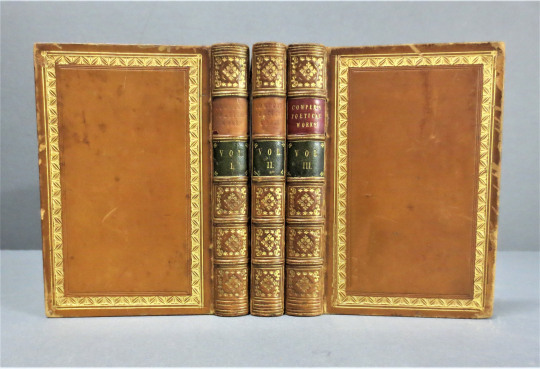
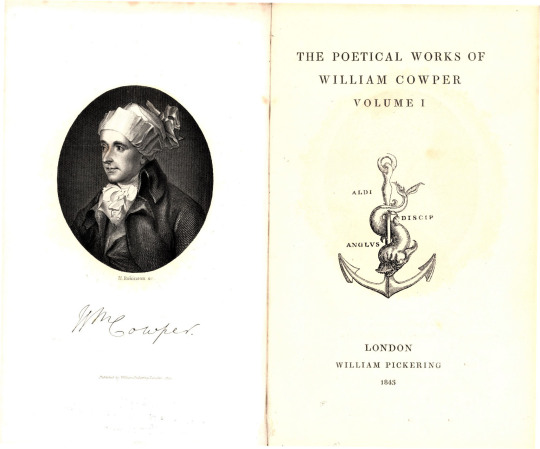
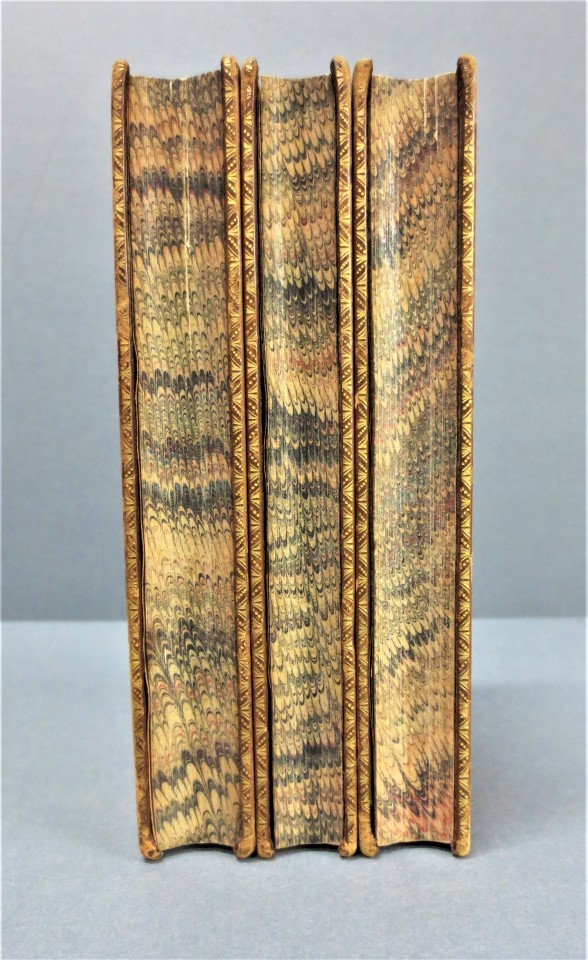





Fore Edge Friday
This week’s #Fore Edge Friday example is a 3-volume set of The Poetical Works of William Cowper printed in Chiswick by Charles Whittingham for the London publisher William Pickering in 1843. The volumes are bound in gold-tooled and stamped calf skin and all edges and endpapers are marbled in what is called a Nonpareil pattern.
According to the University of Washington’s site on Patterned Papers, the “ pattern is created when the desired colors are dropped sequentially onto the bath using some sort of implement to regulate the drop sizes. . . . a comb with one set of teeth set at intervals of 15-30mm is drawn through the bath horizontally, once in either direction with the second pass halving the first. Then another comb with teeth set at 2-3 mm is drawn once across the bath vertically (or horizontally).”
As we have mentioned before, when marbling the edges of a book, the text block is clamped tightly shut, and once dipped, the excess fluid is blown or shaken off quickly to prevent it from running into the book. Once dry, the marbled edges are burnished.
The publisher William Pickering thought of himself as a modern-day Aldus Manutius because of his well-printed (thanks to the Whittinghams’ Chiswick Press), pocket-sized, and carefully-edited editions. Pickering even used Aldus’s famous anchor and dolphin printer’s mark with the Latin phrase Aldi Discip Anglus (the English Disciple of Aldus), as can be seen here on the title page. This set forms part of Pickering’s famous 57-volume series “The Aldine Edition of the British Poets.” Our Cowper set is a second edition, the first being published in 1830. The engraved frontispiece portrait of William Cowper is by Henry Robinson.
View our other Fore Edge Friday posts.
#Fore Edge Friday#marbling#paper marbling#marbled edges#marble papers#marbled book edges#edge marbling#Nonpareil#Nonpareil marbling#Nonpareil pattern#William Cowper#The Poetical Works of William Cowper#William Pickering#Charles Whittingham#Chiswick Press#Aldine Edition of the British Poets#printer's marks#anchor and dolphin#frontispiece portraits#engraved frontispiece#Henry Robinson
77 notes
·
View notes
Photo





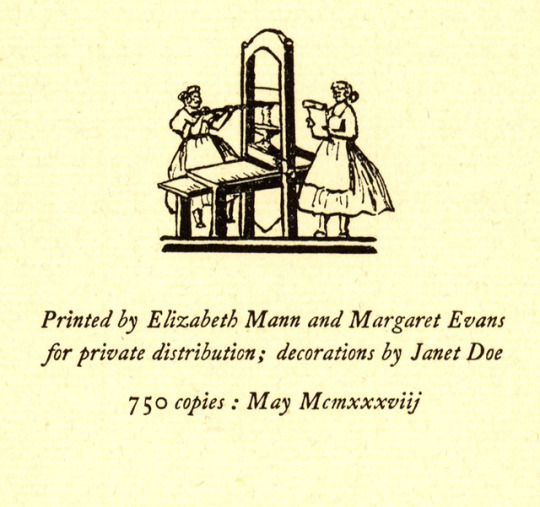
St. Distaff’s Day
Today, January 7, is St. Distaff’s day. It is also the first Monday after Epiphany which makes it Plough Monday. These days mark the time when men and women returned to work after the twelve days of Christmas. When they both fall on the same day there tends to be an additional day of merriment before really returning to work.
There is no actual St. Distaff. A Distaff is a tool used to spin flax into yarn or thread. The act of spinning was traditionally women’s work and distaff became a term used generally for all women’s work and eventually a term for women themselves or the female (distaff) side of the family.
The booklet shown above include an address by American librarian and museum administrator Henry W. Kent to a group of distaff members of the bookmaking profession in New York in 1937. The women present found the speech appealing, so printers Elizabeth Mann, Margaret Evans, and Janet Doe worked together to typeset, decorate, and print it. It was released as Keepsake No. 57 in 1938 by the American Institute of Graphic Arts in a limited edition of 750 copies.
Mr. Kent notes that American historian and librarian L.C. Wroth records Dinah Nuthead, as “the first of a long line of women distinguished in American typographical annals.” He then speaks of the long history of women who carried on their husband’s businesses, “they worked, they contrived, they managed (you may be sure), and they did it very well.”
He laments that there is little record of the artistic achievement of women in the book arts. He then mentions Charlotte and Elizabeth Whittingham who created “embellishments” for both Charles Whittinghams, and Mary Byfield who cut their designs in wood.
I welcome this opportunity to say, what all must feel, that I am glad the Distaff, emblem of women’s work these many centuries, should by them be kept as their sign now that the days of spinning are over, now that they, whether widow, wife, or maid, have turned their hands and their arts so effectively to the making of books.
#st. distaff's day#distaff#women in book arts#aiga#American Institute of Graphic Arts#Women printers#Elizabeth Mann#Margaret Evans#Janet Doe#Henry W. Kent#Dinah Nuthead#Charlotte Whittingham#Elizabeth Whittingham#Mary Byfield#Plough Monday
39 notes
·
View notes